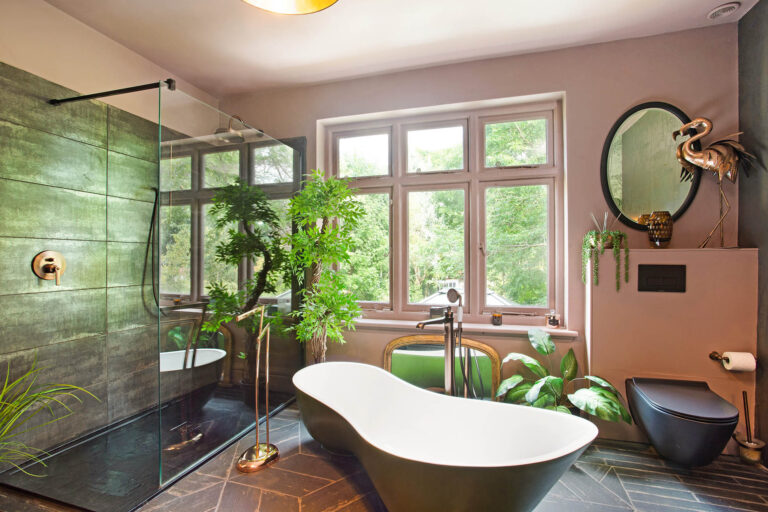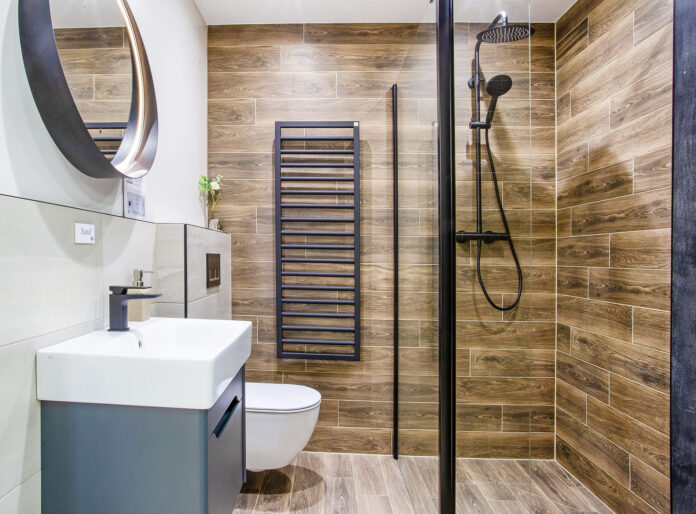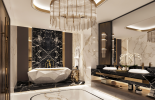[ad_1]
The Do’s And Don’ts Of Designing A Bathroom
When it comes to home design, the bathroom is often overlooked, but it’s a space that deserves just as much attention as any other room in your house. A well-designed bathroom can be a sanctuary, a place of relaxation, and a functional space all at once. Whether you’re renovating an existing bathroom or starting from scratch, here are the do’s and don’ts to keep in mind.
The Do’s For Designing a Bathroom
1. Plan for Functionality:
Begin by considering the practical aspects. Think about who will be using the bathroom, how often, and what their specific needs are. This will guide decisions on fixtures, layout, and storage.
2. Maximise Natural Light:
Natural light can make a huge difference in a bathroom. If possible, incorporate windows or skylights to bring in sunlight. If privacy is a concern, consider frosted glass or window treatments.
3. Choose Durable Bathroom Materials:
Bathrooms are high-moisture environments, so it’s crucial to select materials that can withstand humidity and water exposure. Porcelain tiles, sealed stone, and water-resistant paint are excellent choices.
4. Prioritise Your Bathroom Storage:
Clutter can quickly accumulate in a bathroom, so ample storage is essential. Consider built-in cabinets, floating shelves, or creative storage solutions to keep the space organised.
5. Select Appropriate Fixtures:
The fixtures you choose should not only complement the overall design but also be functional. Opt for high-quality faucets, shower-heads, and toilets that are both aesthetically pleasing and efficient.
6. Focus on Ventilation:
Proper ventilation is crucial for preventing mould and maintaining air quality. Install a good-quality exhaust fan to ensure that moist air is properly circulated out of the bathroom.
7. Consider Accessibility:
If you have family members with mobility concerns, consider incorporating features like grab bars, walk-in showers, and non-slip flooring for a safer bathroom environment.

The Don’ts For Designing a Bathroom
1. Neglect Proper Lighting:
Inadequate or poorly placed lighting can make a bathroom feel cramped and unwelcoming. Avoid relying on a single overhead light and instead incorporate a mix of ambient, task, and accent lighting.
2. Overlook Ventilation Needs:
A bathroom without proper ventilation can lead to moisture problems and mould growth. Don’t skip the exhaust fan, and ensure it’s appropriately sized for the room.
3. Crowd the Space:
While it’s important to have ample storage, avoid overcrowding the space with too many cabinets or bulky fixtures. This can make the room feel small and cramped.
4. Neglect Aesthetic Cohesion:
Ensure that the design elements in your bathroom, such as tiles, fixtures, and accessories, complement each other. A cohesive colour palette and style will create a more harmonious and visually appealing space.
5. Forget About Safety:
Safety should always be a top priority. Avoid using slippery materials for flooring and consider features like slip-resistant mats and grab bars, especially if the bathroom will be used by children or elderly individuals.
6. Ignore Water Efficiency:
In today’s eco-conscious world, it’s important to choose water-saving fixtures like low-flow toilets and faucets. This not only helps the environment but also reduces water bills.
7. Overlook Maintenance:
While it’s tempting to focus solely on aesthetics, remember that a bathroom needs to be easy to clean and maintain. Choose materials that are resistant to stains and easy to wipe down.

A Space of Comfort and Beauty
By keeping these do’s and don’ts in mind, you’ll be well on your way to designing a bathroom that is not only beautiful but also functional, safe, and easy to maintain. Remember, a well-designed bathroom can greatly enhance your daily routine and add value to your home.
The post The Do’s And Don’ts Of Designing A Bathroom appeared first on Hugo Oliver.
[ad_2]
hugooliver.com










